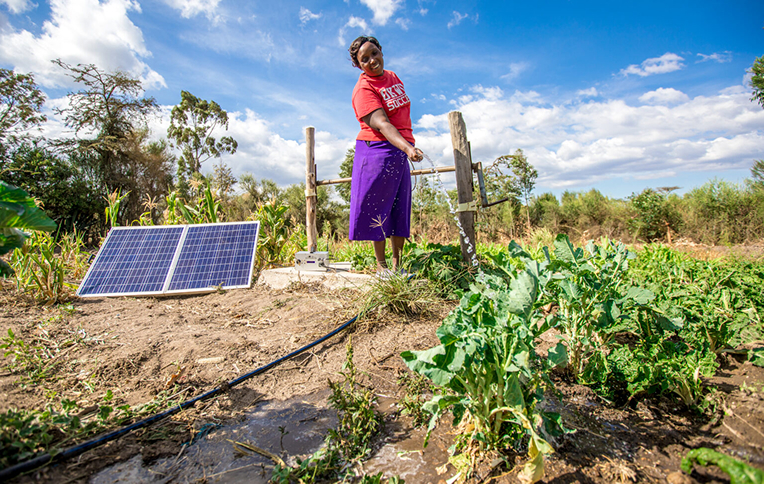Power Your Water Needs with the Sun — Efficiently & Sustainably
Access to clean water remains a major challenge across many parts of rural Africa. But with solar technology becoming more affordable, a new solution is rising fast: solar-powered water pumps.
From Guinea to Ghana, Nigeria to Kenya, thousands of families, farmers, and NGOs are switching to solar water pumps for boreholes, wells, and irrigation.
This blog explores:
- The benefits of solar water pumps
- Their cost in 2025
- The best use cases across Africa
✅ What Is a Solar Water Pump?
A solar water pump uses electricity generated from solar panels to pump water from a borehole, well, or river — without relying on grid power or fuel.
Components:
- Solar panels
- Water pump (submersible or surface)
- Controller/inverter
- Mounting structure
- Optional: Battery storage
🔌 Unlike diesel or electric pumps, solar pumps run on clean, free energy from the sun.
🌍 Top Benefits of Solar Water Pumps in Africa
1. Zero Running Costs
Once installed, there are no fuel or electricity bills — ideal for rural and off-grid communities.
2. Low Maintenance
Solar systems have fewer moving parts and require minimal servicing compared to diesel pumps.
3. Eco-Friendly
No air or noise pollution. Reduces reliance on fossil fuels.
4. Independence
Not affected by power cuts, fuel shortages, or rising energy prices.
5. Long Lifespan
With proper care, solar pumps can last 10–20 years.
💸 Cost of Solar Water Pumps in Africa (2025 Estimates)
Prices vary based on depth, water need, and pump size.
| Application Type | Pump Size (Watts) | Depth | Cost Range (USD) |
| Small Home Use | 150W – 400W | <40 meters | $500 – $1,000 |
| Small Farms / Gardens | 500W – 1kW | 40–80 meters | $1,200 – $2,000 |
| Large Farms / Villages | 1.5kW – 3kW | 80–150 meters | $2,500 – $5,000+ |
💡 Some providers offer subsidies, payment plans, or NGO support programs.
🛠️ Best Use Cases for Solar Water Pumps in Africa
✅ 1. Rural Households
- Ideal for boreholes & shallow wells
- Can run lights + pump if battery backup is added
- Reliable for family water supply
✅ 2. Smallholder Farms
- Excellent for irrigation and livestock watering
- No recurring diesel costs during dry seasons
- Timers or float switches help automate usage
✅ 3. Community Water Projects
- Powers large tanks or elevated storage
- Multiple taps connected to one pump system
- Can serve entire villages or health centers
✅ 4. Schools & Clinics
- Continuous water supply for hygiene
- Improves school attendance, especially for girls
- Low maintenance = reliable for remote areas
⚠️ Challenges to Consider
- Initial cost may be high upfront (but savings are long-term)
- Proper sizing is crucial — underpowered pumps will fail
- Dusty environments require panel cleaning every few weeks
- Battery systems (optional) add to cost and need care
🧠 Work with an experienced installer to size your system properly.
📍 Real-World Success Story
“Before, we used a hand pump that often broke. Now with our solar pump, we have water 24/7 — even during dry season. It changed our village completely.”
– Mariama D., Nzérékoré, Guinea
🧰 How to Get Started with Solar Water Pumps
- Conduct a borehole test (if not done yet)
- Calculate daily water need (liters per day)
- Get site analysis (sunlight, depth, tank location)
- Choose a reputable installer (with warranty & support)
- Monitor system & clean panels monthly

